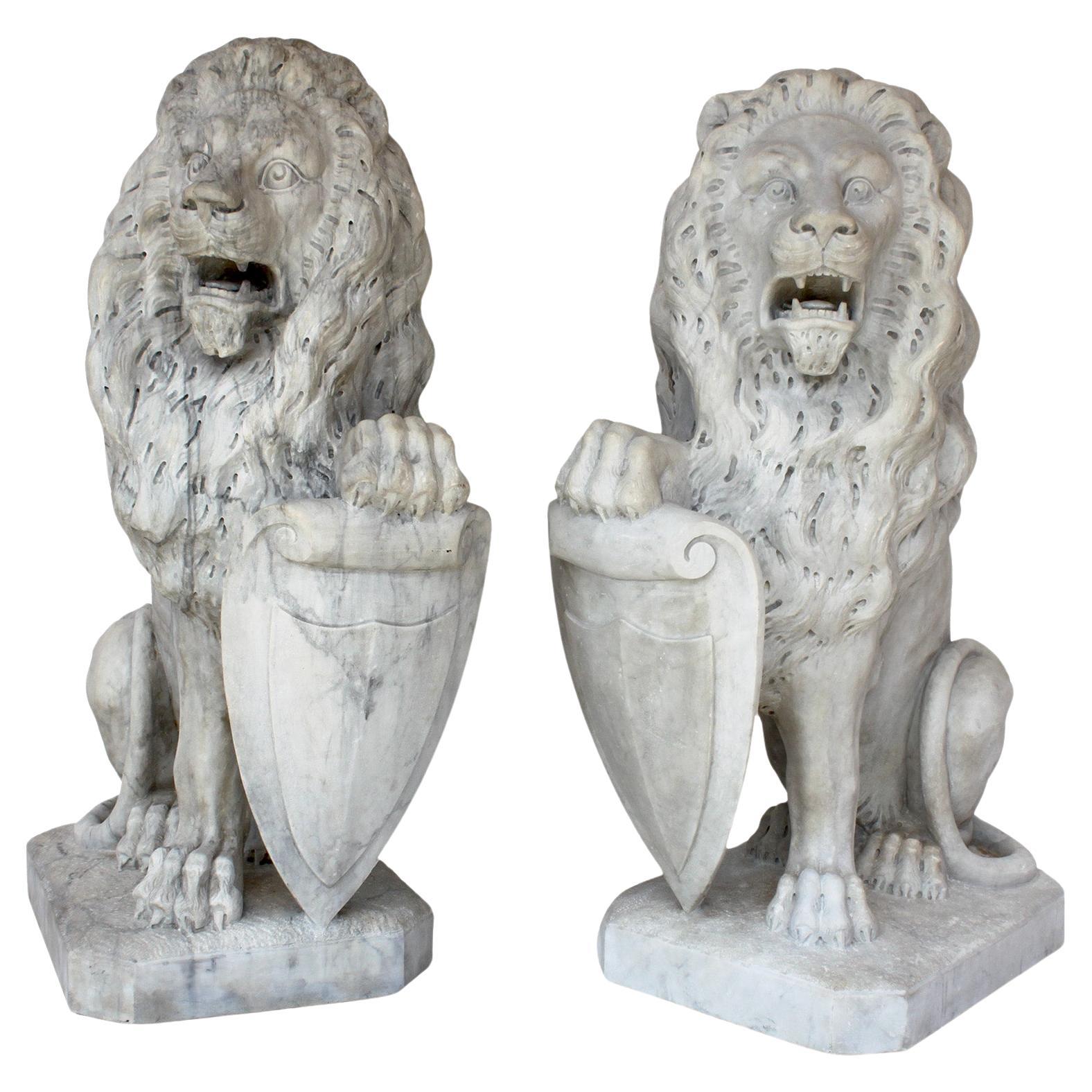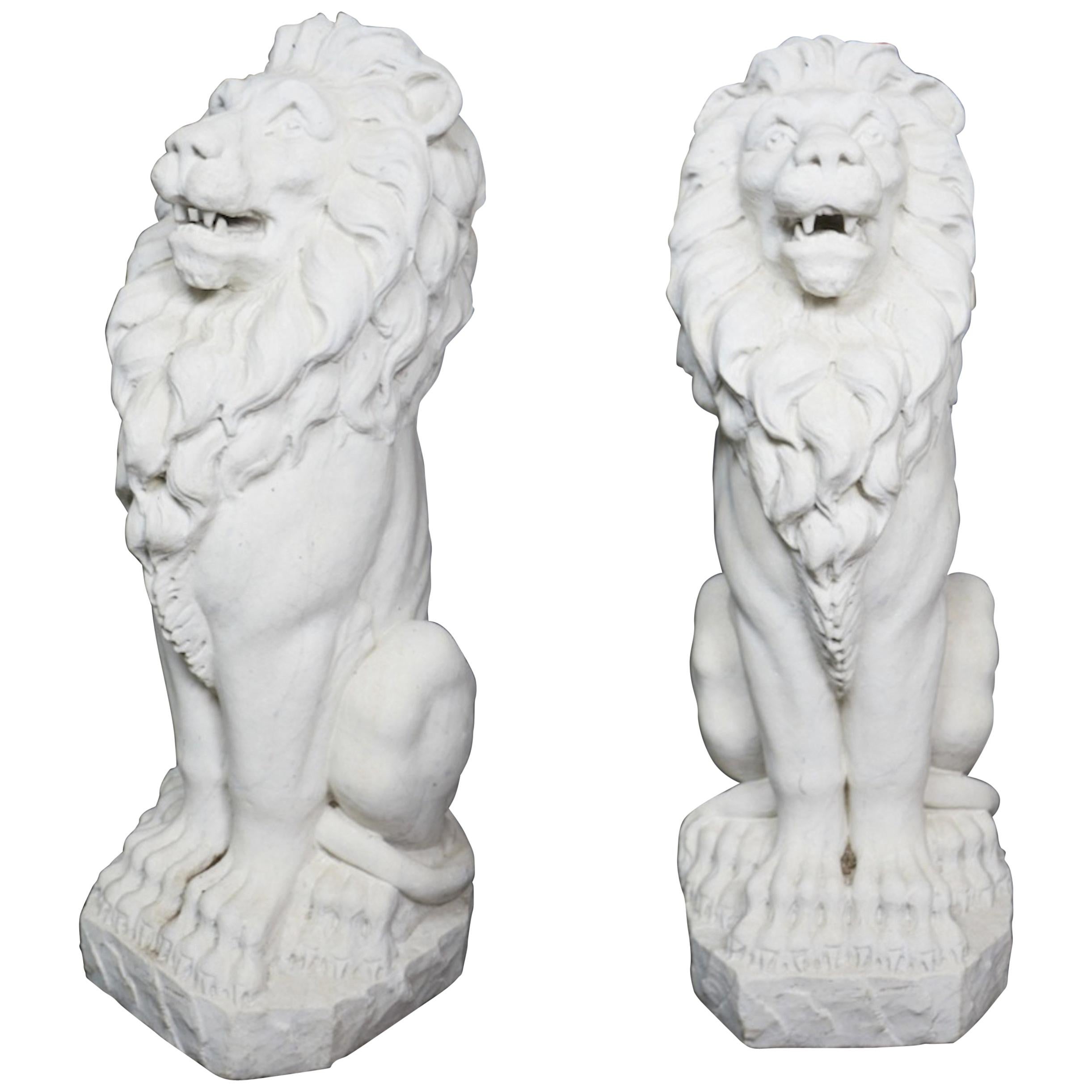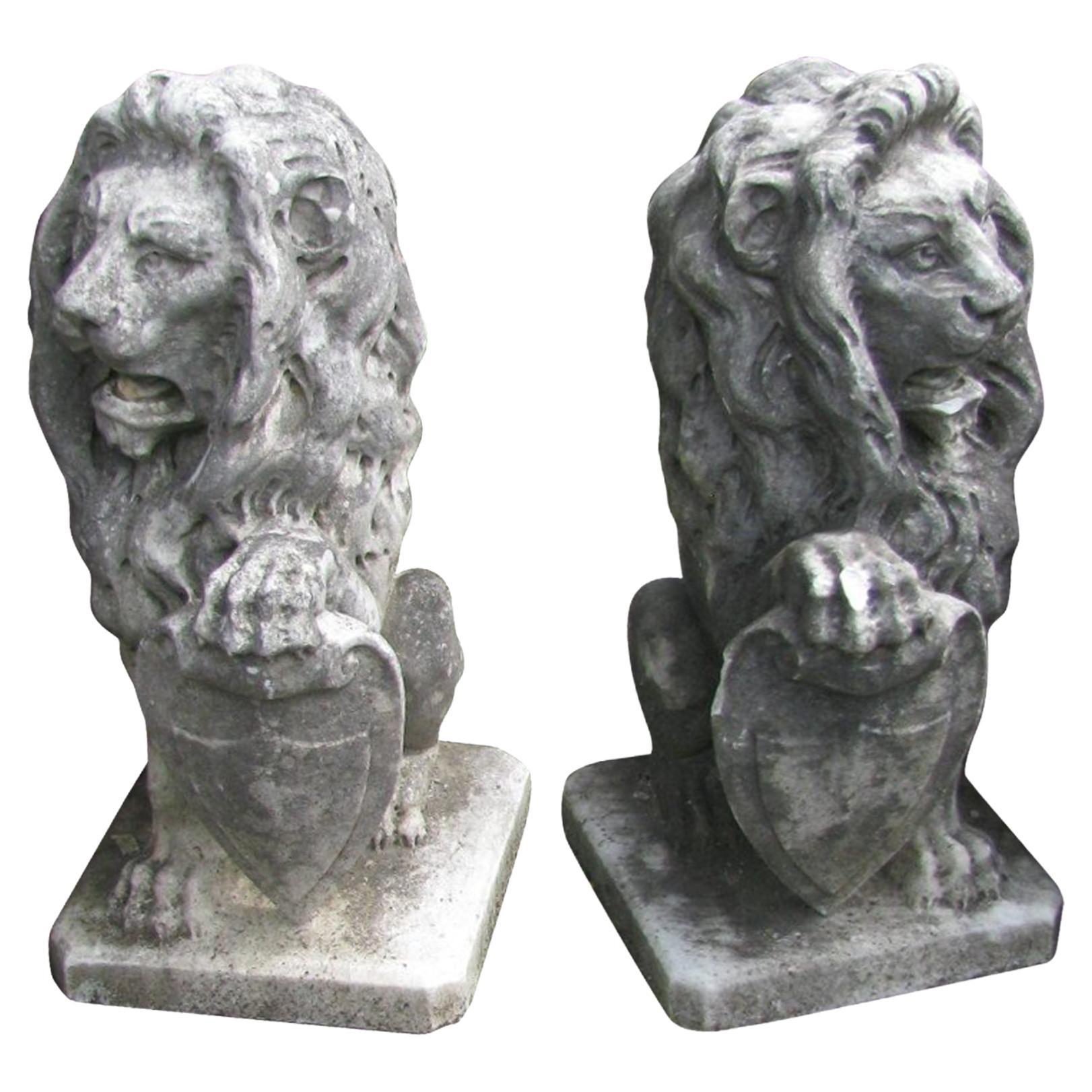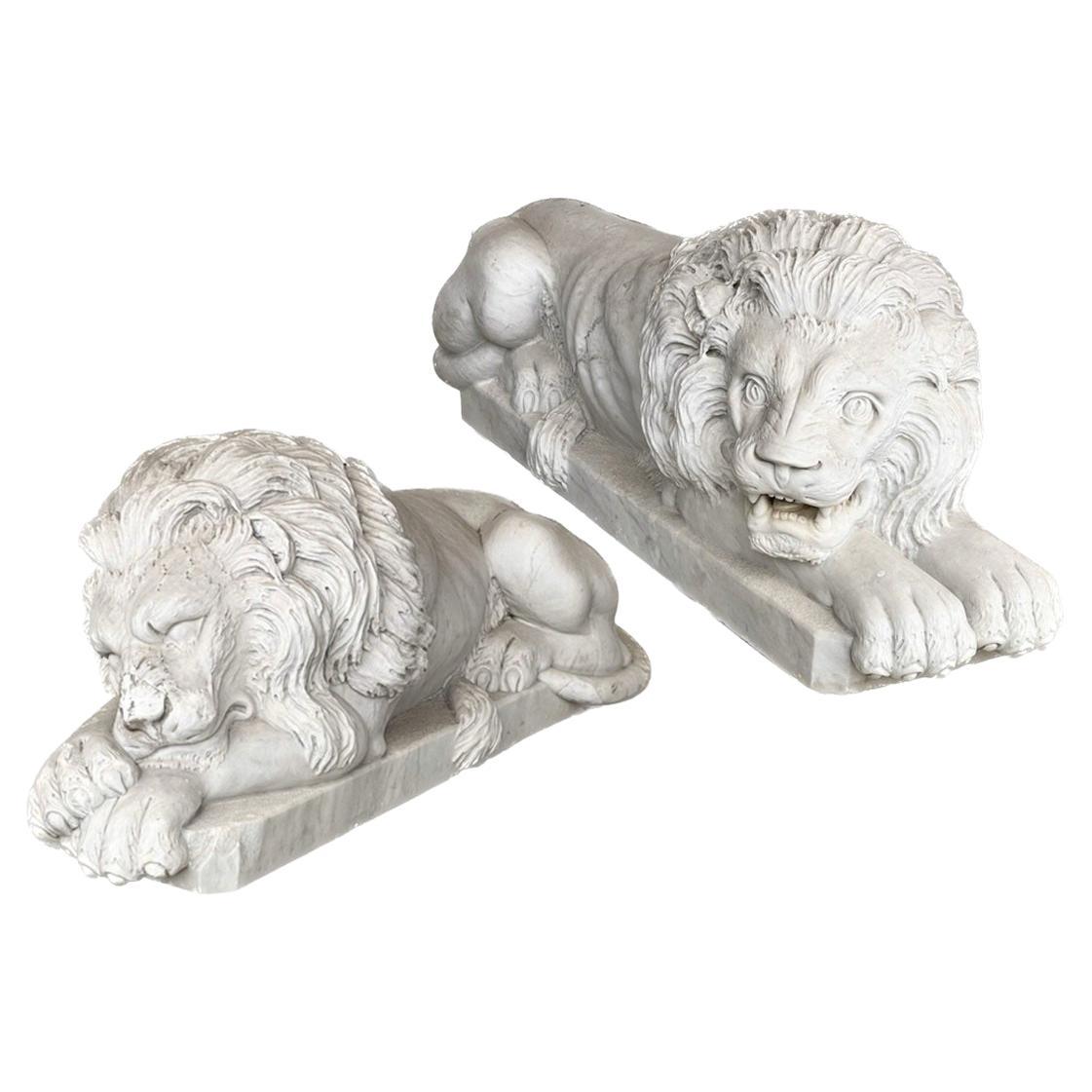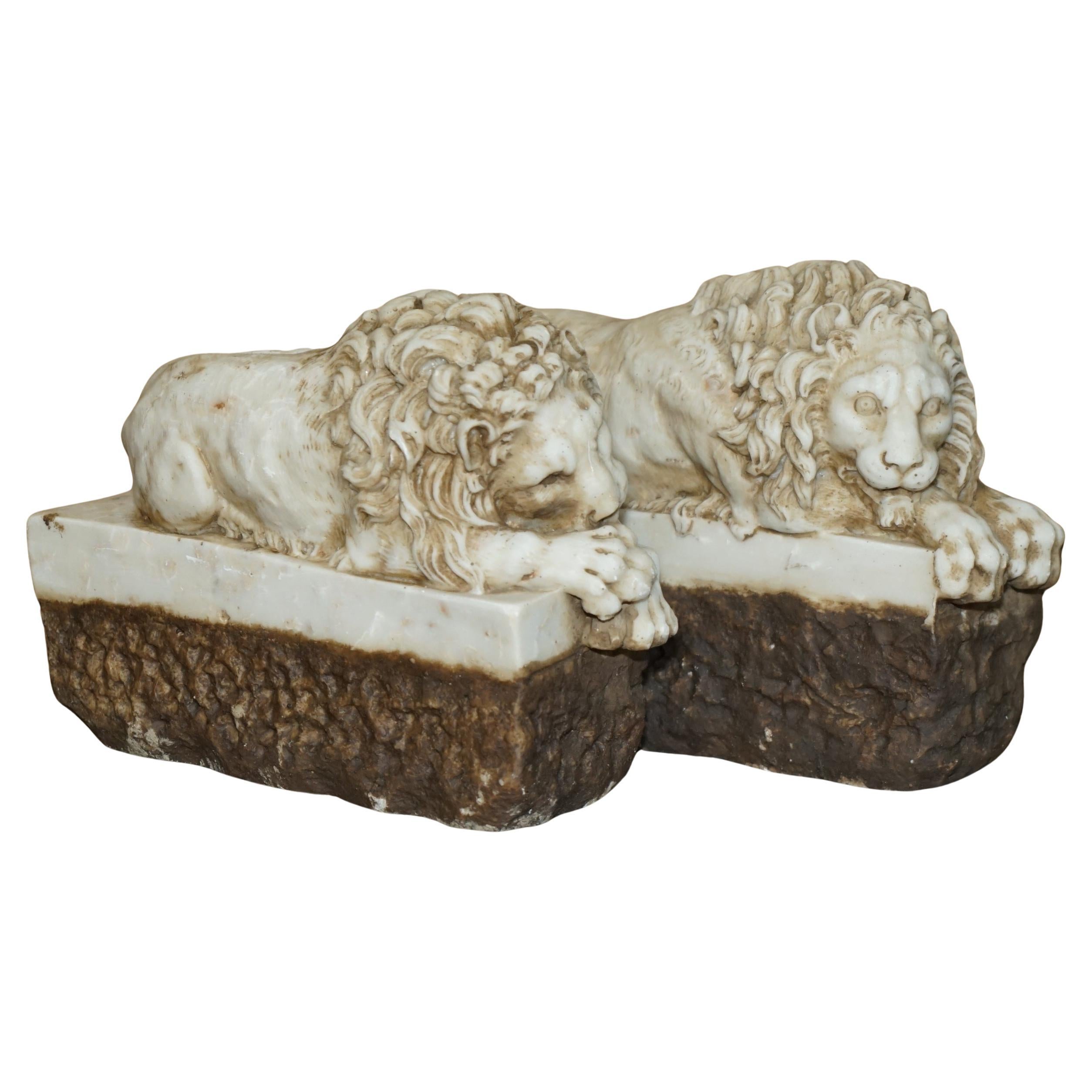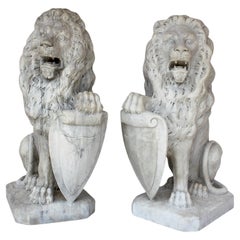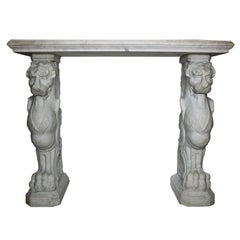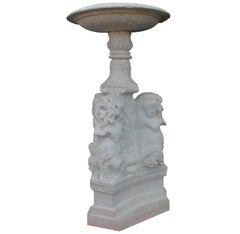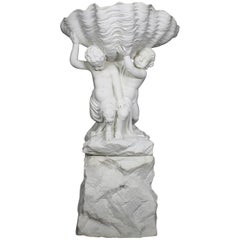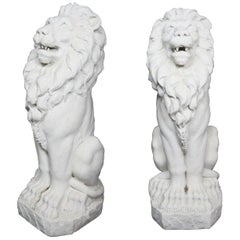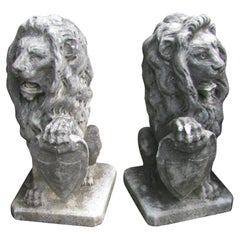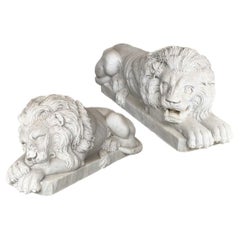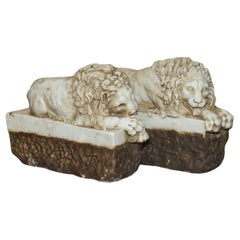Items Similar to Palatial Pair of English Baroque Style 19th Century Carved Marble Sitting Lions
Video Loading
Want more images or videos?
Request additional images or videos from the seller
1 of 12
Palatial Pair of English Baroque Style 19th Century Carved Marble Sitting Lions
$29,850per set
$47,500per set37% Off
£22,545.82per set
£35,876.93per set37% Off
€26,056.48per set
€41,463.41per set37% Off
CA$41,869.19per set
CA$66,626.02per set37% Off
A$46,569.30per set
A$74,105.24per set37% Off
CHF 24,373.37per set
CHF 38,785.10per set37% Off
MX$567,991.83per set
MX$903,839.60per set37% Off
NOK 306,260.28per set
NOK 487,348.86per set37% Off
SEK 288,077.34per set
SEK 458,414.52per set37% Off
DKK 194,486.30per set
DKK 309,484.07per set37% Off
About the Item
A very fine and palatial pair of English Baroque style 19th century carved marble sitting lions, the very realistic carved pair with fine attention to detail, each resting its front two paws on a coat-of-arms shield carved with the emblem of two ladders joined by crossed sword. Unsigned, circa 1880.
Measures:
Height: 47 1/2 inches (120.7 cm).
Width: 25 inches (63.5 cm).
Depth: 31 inches (78.8 cm).
- Dimensions:Height: 47.5 in (120.65 cm)Width: 25 in (63.5 cm)Depth: 31 in (78.74 cm)
- Sold As:Set of 2
- Style:Baroque (In the Style Of)
- Materials and Techniques:
- Place of Origin:
- Period:
- Date of Manufacture:circa 1880
- Condition:Wear consistent with age and use. Minor losses. Minor fading. A truly beautiful and impressive pair of Royal guarding lions. Both are weathered with some minor chipping, old paint residue and erosion hairline cracks as expected for these type of outdoor sculptures. Great for a Grand entrance or by the poolside.
- Seller Location:Los Angeles, CA
- Reference Number:Seller: Ref.: A12081stDibs: LU179625361403
About the Seller
5.0
Vetted Professional Seller
Every seller passes strict standards for authenticity and reliability
Established in 1982
1stDibs seller since 2016
135 sales on 1stDibs
Typical response time: 1 hour
- ShippingRetrieving quote...Shipping from: Los Angeles, CA
- Return Policy
Authenticity Guarantee
In the unlikely event there’s an issue with an item’s authenticity, contact us within 1 year for a full refund. DetailsMoney-Back Guarantee
If your item is not as described, is damaged in transit, or does not arrive, contact us within 7 days for a full refund. Details24-Hour Cancellation
You have a 24-hour grace period in which to reconsider your purchase, with no questions asked.Vetted Professional Sellers
Our world-class sellers must adhere to strict standards for service and quality, maintaining the integrity of our listings.Price-Match Guarantee
If you find that a seller listed the same item for a lower price elsewhere, we’ll match it.Trusted Global Delivery
Our best-in-class carrier network provides specialized shipping options worldwide, including custom delivery.More From This Seller
View AllPalatial Pair of French Baroque Style 19th Century Carved Marble Sitting Lions
Located in Los Angeles, CA
A Very Fine and Palatial Pair of French Baroque Revival Style 19th Century Carved Marble Sitting Lions, the very realistic carved pair of posing lions with fine attention to detail, ...
Category
Antique Late 19th Century French Baroque Revival Animal Sculptures
Materials
Marble
$26,895 Sale Price / set
23% Off
Italian 19th Century Neoclassical Style Carved Carrara Marble Lion Wall Console
Located in Los Angeles, CA
A Large Italian 19th century neoclassical Revival style carved Carrara marble figural wall console table. The rectangular marble top supported by twin Roman carved marble monopodiums...
Category
Antique 19th Century Italian Neoclassical Revival Console Tables
Materials
Carrara Marble
$19,800 Sale Price
20% Off
Whimsical English 19th-20th Century White Marble Figural Outdoor Dog Fountain
Located in Los Angeles, CA
A Whimsical English 19th-20th century white marble figural fountain with dogs fountain. The Baroque Revival six-sided tripod marble base surmounted with three upright seated Yorkshire Terriers resting on a leaf and acanthus center stem, topped with a semi-circular scalloped carved basin...
Category
Antique Early 1900s English Baroque Revival Fountains
Materials
Marble
Italian 19th Century Carved Carrara Marble Figural Fountain Jardinière Planter
By Giovanni Battista Lombardi
Located in Los Angeles, CA
A very fine Italian 19th century carved Carrara marble figural fountain "Jardinière" modelled as a standing Putto and a Satyr supporting a sea-sh...
Category
Antique 19th Century Italian Baroque Figurative Sculptures
Materials
Carrara Marble
$28,950 Sale Price
35% Off
Charming Italian 19th Century Carved Marble Group "Playful Putti with Goat"
Located in Los Angeles, CA
A very fine and charming Italian 19th century carved Carrara Marble Group "Playful Putti with Goat" depicting two young children, one riding the goat whose two front legs are in the ...
Category
Antique 19th Century Italian Rococo Figurative Sculptures
Materials
Carrara Marble
$29,850 Sale Price
39% Off
French 19th Century, Whimsical Rococo Style Marble Carved Planter with Children
Located in Los Angeles, CA
A fine French 19th century whimsical Rococo style white marble carved planter jardinière with figures of playful Putti 'Children' playing with a goats among trees and vines, raised o...
Category
Antique 19th Century French Rococo Revival Planters and Jardinieres
Materials
Marble
You May Also Like
Pair of French Statuary Marble Garden Lions
Located in Montreal, QC
Pair of French statuary marble garden lions.
Category
Antique Late 19th Century French Statues
Materials
Carrara Marble
$12,500 / set
Pair of Hand-Carved 19th Century Italian Marble Lions
Located in Port Jervis, NY
Hand-carved pair of Carara marble, 19th century, Italy, darkened from age, very heavy weighing about 175lbs each. Some minor chips to marble. In good shape overall. Priced and sold a...
Category
Antique Late 19th Century Italian Baroque Revival Statues
Materials
Carrara Marble
Magnificent Compatible Pair Of Recumbent Carved Marble Lions
Located in Bridgeport, CT
A Pair of Male Lions in carved marble resting on octagonal attached slab bases. Originally purchased in London and having incredible classic form. One of the Lions rests with his hea...
Category
Early 20th Century Renaissance Statues
Materials
Marble
FINE PAIR OF ANTIQUE 19TH CENTURY ITALIAN ALABASTER LiONS AFTER ANTONIO CANOVA
Located in West Sussex, Pulborough
Royal House Antiques
Royal House Antiques is delighted to offer for sale this extremely collectable pair of original Antique Circa 1880 Italian Grand Tour Alabaster Recumbent Lions ...
Category
Antique 1880s Italian Grand Tour Animal Sculptures
Materials
Alabaster
Pair of Lifesize antique marble lions after Joseph Gott
Located in Los Angeles, CA
An impressive pair of life-size 19th century English Baroque style carved white marble sitting lions. each lion resting its front paws on a carved shield.
After Josef Gott.
This ...
Category
Antique 19th Century English Sculptures
Materials
Marble
Antique 19th Century Italian Pair Of Marble Lions With Heraldic Shield c.1880
Located in Royal Tunbridge Wells, Kent
Antique 19th Century exquisite pair of Italian marble lions, each bearing a heraldic shield. Carved meticulously from Carrara marble, renowned for its purity and elegance, these maje...
Category
Antique 1880s Italian Other Animal Sculptures
Materials
Marble
More Ways To Browse
Antique Sitting Room Furniture
English Baroque Furniture
Marble Lion
Marble Lions
Baroque Marble
Pair Of Carved Lions
Baroque Cross
Coat Of Arms Carved
English Coat Of Arms
Marble Carved Lions
Marble Lion Paw
Coat Of Arms Lions
Marble Coat Of Arms
Anthony Redmile
Ceramic Foo Dogs
Ceramic Horse Head
Ceramic Sheep
Greyhound Whippet Statues
